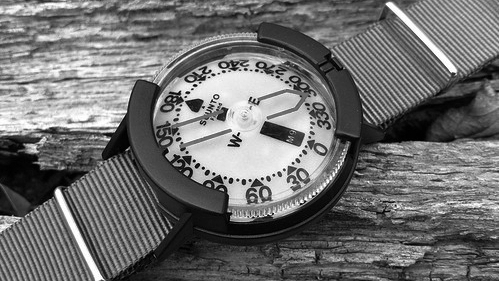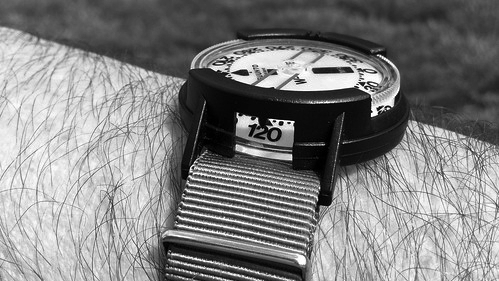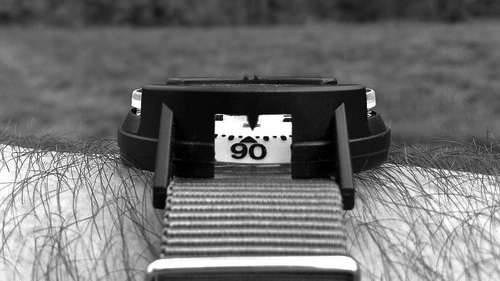Suunto M-9 Wrist Compass

For the past few months I've been testing the Suunto M-9 wrist compass to see how well it performs out and about on the trails. I was attracted to the M-9 wrist compass because of its size and weight in addition to the fact that it's a wrist compass that I can wear and always have handy. I'll admit that I was initially a little bit skeptical about the strength of the plastic and effectiveness of such a diminutive sized compass, but have come to really love and rely on my M-9 so much so that I wear it on my right wrist as part of my standard backpacking kit.
Specs and Features:
- Liquid-filled compass
- Sapphire jeweled bearing for accuracy
- Entire card surface is luminous and glows brightly in the dark
- Serrated bezel ring turns easily (even wearing gloves) with a ratcheting mechanism
- Can be read from the top or from the side
- Upper sighting notches improve direction setting
- Side reading window for effective use when attached to the wrist
- Comes with a convenient black Velcro wrist strap
- Measures 1.6 x 0.6 x 1.9 inches (W x H x D)
- Weighs a mere 1.2 ounces
- Is backed by Suunto's lifetime warranty!

Generally speaking, if you need to carry a compass with you, bigger is better. The reason is quite obvious, the accuracy and capability gets better if you have a large stable platform and sight. This has proven to be true time and time again with smaller button compasses or watch strap compasses that I have tried, nearly all of which were too small to be really effective. The M-9 is the exception to the rule.
Despite having some concerns about the strength and durability of the M-9's black plastic housing, specifically the strap lugs, the compass has functioned flawlessly on every trip so far. I was also skeptical of how effective the M-9 would be after several consecutive days of being bumped and thrashed around while attached to my wrist. The short answer is, it didn't seem to be an issue!
The liquid filled case helps with accuracy and settling time (the time it takes for a compass needle or card to stop moving), as the M-9 settles very quickly in 1-1.5 seconds based on my tests. The liquid also helps to support the graduated card (dial) of the M-9 and absorb slight movements of the wrist when trying to take an accurate reading with the compass.

Sighting Notches: On the top edge of the M-9 are two small sighting notches. These can be used for accurate direction sighting when reading the M-9 from the side window (as shown above). You use the sighting notches by aligning them with the card pointer that is located in the top center of the side window. Using them just like the sights on the barrel of a gun (only upside down) you align the card pointer needle in the center of the two sighting notches to set your direction of travel. As with a base plate compass, you then can use the "snap a line" method to navigate.
Wrists Strap: About the only thing I didn't like about the M-9 was the black vlecro strap that it came with. Not only did it feel cheap and a little flimsy, but it was far too long to work on my wrist (#fail). I have a medium sized (7.5inch) wrist, but the M-9 wrist strap had the Velcro placed so far along the length of the strap that it didn't meet up when I wrapped it around my wrist. And trimming it shorter wouldn't have helped.
I was going to throw the black Velcro away, but ended up using it as a luggage strap to wrap around my Z-lite sleeping pad. The lugs of the M-9 are 20mm wide, so I used a spare NATO watch strap that I had lying around as a replacement and have been very happy with it ever since.
Summary: A compass is a relatively simple device yet it's amazing how many I have seen fail out on the trail because of loss of magnetism, inaccurate markings, or poor construction quality. The Suunto M-9 has proven me wrong in many ways. It is a very lightweight, reliable, and effective compass despite its size. I would happily recommend the M-9 as a primary or backup compass to anyone considering purchasing one. I am still carrying my Silva Polaris base plate compass in my pants pocket as my primary device, but I have found that I am taking it out less and less after wearing the M-9.